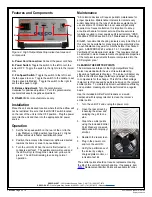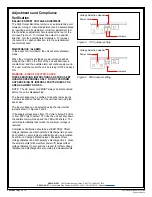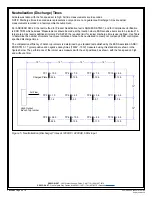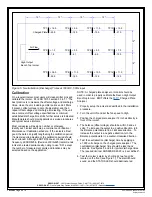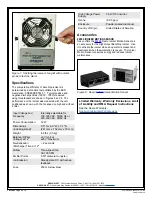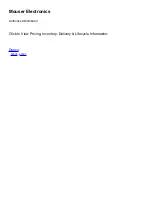
TB-3043
Page 1 of 6
© 2019 DESCO INDUSTRIES INC
Employee Owned
DESCO WEST
- 3651 Walnut Avenue, Chino, CA 91710 • (909) 627-8178
DESCO EAST
- One Colgate Way, Canton, MA 02021-1407 • (781) 821-8370 • Website:
Made in the
United States of America
High Output Benchtop Ionizer
Installation, Operation and Maintenance
Description
The Desco High Output Benchtop Ionizer is a compact
and lightweight steady state DC auto-balancing benchtop
worksurface ionizer with integrated closed-loop feedback.
The unit is normally placed at one end of the workbench or
area to be neutralized. It may also be mounted to a wall or
shelf. The Ionizer’s neutralization discharge time will be best
approximately 12" to 48" directly in front of the unit and will
increase as the distance from the unit increases.
The Desco High Output Benchtop Ionizer employs Steady
State DC technology. Steady State DC systems consist of
separate negative and positive ion emitters connected by a
pair of high-voltage cables to their respective high-voltage
power supplies. The spacing between emitters varies
depending on the design, and DC power is constantly
applied to the emitter points. The ionizer uses feedback from
the internal sensor grill to continuously adjust the output to
maintain balance.
Ionizers are useful in limiting electrostatic charge generation,
ElectroStatic Discharge, ElectroStatic Attraction, as well
as preventing equipment latch-up. Per ANSI/ESD S20.20
section 6.2.3.1. Protected Areas Requirement states:
“Ionization or other charge mitigating techniques shall be
used at the workstation to neutralize electrostatic fields
on all process essential insulators if the electrostatic field
is considered a threat.” “Air ionization can neutralize the
static charge on insulated and isolated objects by producing
separate charges in the molecules of the gases of the
surrounding air. When an electrostatic charge is present
on objects in the work environment, it will be neutralized
by attracting opposite polarity charges from the ionized
air. Note that ionization systems should not be used as a
primary means of charge control on conductors or people.”
(Reference: EN 61340-5-2:1 clause 5.2.9)
September 2019
“The primary method of static charge control is direct
connection to ground for conductors, static dissipative
materials, and personnel. A complete static control program
must also deal with isolated conductors that cannot be
grounded, insulating materials (e.g., most common plastics),
and moving personnel who cannot use wrist or heel straps or
ESD control flooring and footwear.
Air ionization is not a replacement for grounding methods.
It is one component of a complete static control program.
Ionizers are used when it is not possible to properly ground
everything and as backup to other static control methods. In
clean rooms, air ionization may be one of the few methods
of static control available.” (ESD Handbook ESD TR20.20
Ionization, section 5.3.6.1 Introduction and Purpose / General
Information)
Ionizer Selection
ANSI/ESD S20.20 section 6.1.1.2. ESD Control Program
Plan Guidance states: “The Plan should include a listing of
the specific type of ESD protective materials and equipment
used in the Program.” When selecting an ionizer, life cycle
costs should be considered, including:
- equipment cost
- installation cost
- operation and maintenance cost
Desco ionizers meet the ANSI/ESD S20.20 required limits
of less than ± 35 volts offset voltage balance tested in
accordance with ANSI/ ESD STM3.1. All Desco benchtop
ionizers greatly exceed the requirement providing ±5 to ±25
volt auto-balancing.
The High Output Benchtop Ionizer is available in two models:
Item
Input Voltage
120 VAC
220 VAC
Packaging
1 High Output Benchtop Ionizer
1 Power Cord, North America (60505 only)
1 Emitter Point Cleaner Pack
1 Certificate of Calibration
Figure 1. Desco High Output Benchtop Ionizer
TECHNICAL BULLETIN TB-3043


